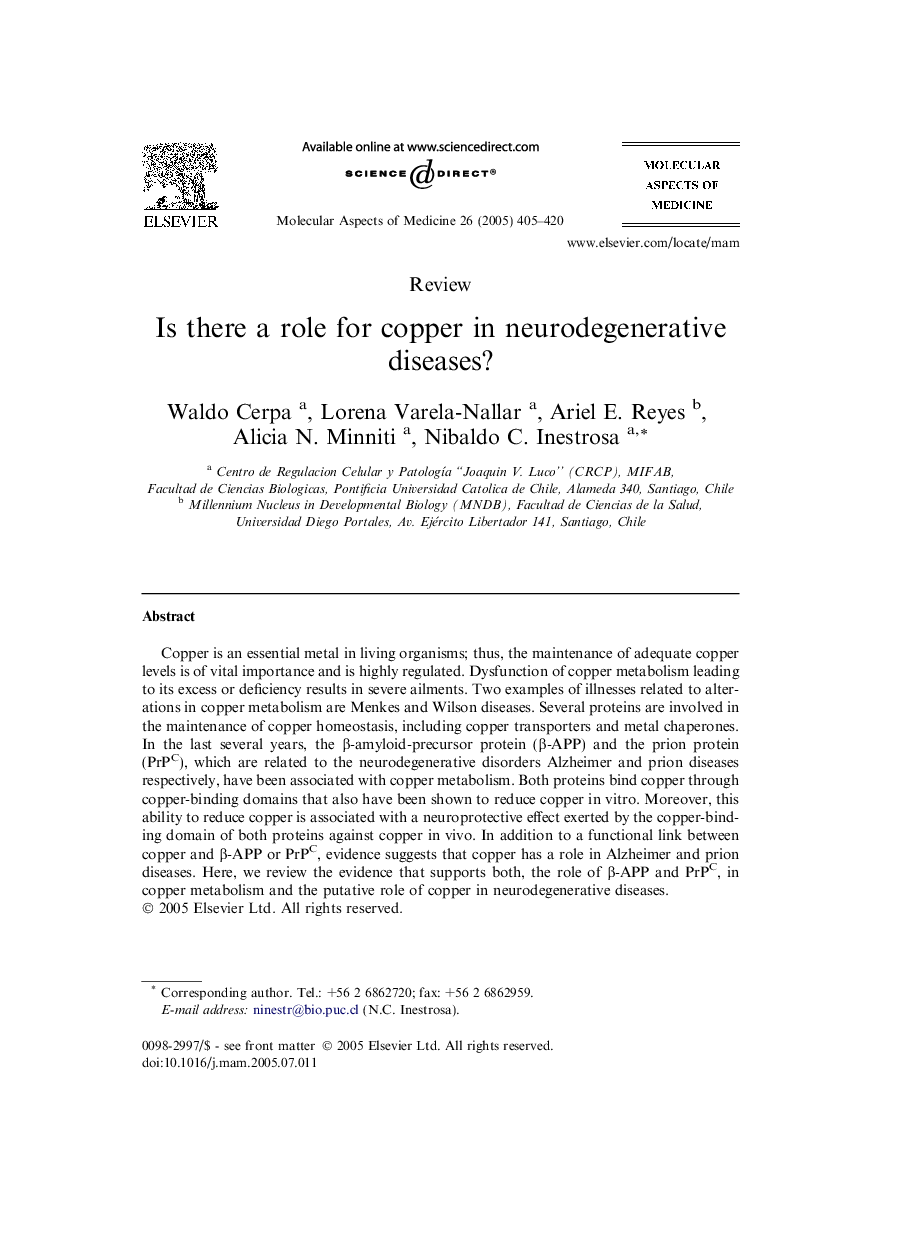| Article ID | Journal | Published Year | Pages | File Type |
|---|---|---|---|---|
| 9893158 | Molecular Aspects of Medicine | 2005 | 16 Pages |
Abstract
Copper is an essential metal in living organisms; thus, the maintenance of adequate copper levels is of vital importance and is highly regulated. Dysfunction of copper metabolism leading to its excess or deficiency results in severe ailments. Two examples of illnesses related to alterations in copper metabolism are Menkes and Wilson diseases. Several proteins are involved in the maintenance of copper homeostasis, including copper transporters and metal chaperones. In the last several years, the β-amyloid-precursor protein (β-APP) and the prion protein (PrPC), which are related to the neurodegenerative disorders Alzheimer and prion diseases respectively, have been associated with copper metabolism. Both proteins bind copper through copper-binding domains that also have been shown to reduce copper in vitro. Moreover, this ability to reduce copper is associated with a neuroprotective effect exerted by the copper-binding domain of both proteins against copper in vivo. In addition to a functional link between copper and β-APP or PrPC, evidence suggests that copper has a role in Alzheimer and prion diseases. Here, we review the evidence that supports both, the role of β-APP and PrPC, in copper metabolism and the putative role of copper in neurodegenerative diseases.
Keywords
Related Topics
Life Sciences
Biochemistry, Genetics and Molecular Biology
Biochemistry
Authors
Waldo Cerpa, Lorena Varela-Nallar, Ariel E. Reyes, Alicia N. Minniti, Nibaldo C. Inestrosa,
